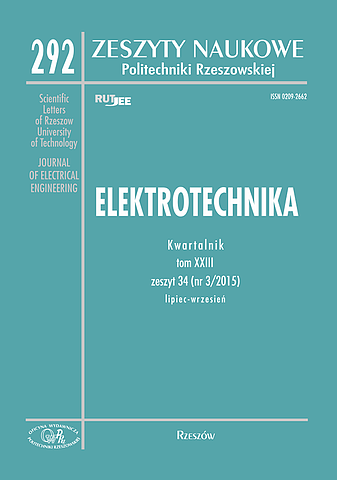Abstract
The article presents chosen possibilities of Multisim and Mathcad computer programs in the context of their application in the analysis of non-linear circuits of direct current. Three circuits including non-linear elements have been analyzed. Their current-voltage characteristics have been presented graphically, in a table or in the form of a polynomial. On the basis of this analysis, different ways of declaration of non-linear element and its characteristic have been illustrated. This was done by direct recording of the coordinates of current-voltage non-linear characteristics in the very element using Multisim program (calculation example I). The second way was by recording in the form of polynomial in equations using one of the numerical procedures in Mathcad program (calculation example II, calculation example III) The third way was in the graphic form using characteristics crossing method illustrated in Mathcad program (calculation example III). The presented examples of solutions of the tasks described in the article are not the only possible ways of obtaining the results. Obviously, each of the tasks described could be solved in other way using other computer programs. The article presents such possibilities of Multisim and Mathcad programs which (depending on the degree of complexity of the circuit) contribute to obtaining, in a fast and precise way, the final results of computer of direct current non-linear circuits.
References
[3] Noga K., Radwański M.: Symulacja układów cyfrowych. Zastosowanie pakietu Multisim 10, Elektronika Praktyczna, nr 6, 2009, s. 72-77, http://ep.com.pl/files/2501.pdf [dostęp: 14 września 2015r.].
[4] Szczepański A., Trojnar M.: Obwody i Sygnały. Oficyna Wydawnicza Politechniki Rzeszowskiej, Rzeszów 2006.
[5] Szczepański A., Trojnar M.: Obwody i Sygnały. Laboratorium komputerowe. Instrukcje do ćwiczeń (Wydanie III). Oficyna Wydawnicza Politechniki Rzeszowskiej, Rzeszów 2014.
[6] Bodnar A., Dziewałtowski W., Ziębakowski T.: Mathcad. Instrukcja do ćwiczeń laboratoryjnych z Informatyki. http://www.tezet.ps.pl/PLIKI/MATHCAD/ MATHCAD_instrukcja_uzupelniona.pdf [dostęp: 21 września 2015r.].
[7] Regel W.: Mathcad. Przykłady zastosowań. Wydawnictwo MIKOM, Warszawa 2004.





